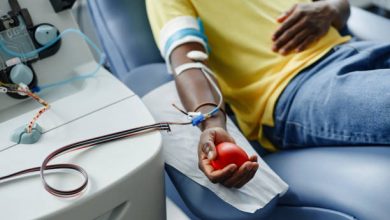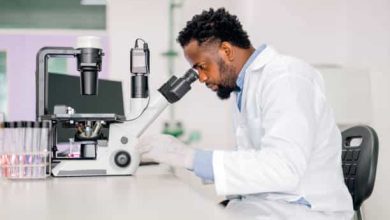Can Women Get Prostate Cancer?


Can women get prostate cancer?
While most people associate prostate cancer with men, research shows that women can develop a rare form of the disease linked to the Skene’s glands, sometimes called the female prostate.
These small glands are located near the front of the vagina.
Even though female prostate cancer is extremely uncommon, understanding the risks, symptoms, and treatment options is important for early detection and care.
RELATED: 8 Ways You Can Prevent Prostate Cancer
Do Women Have a Prostate?
Technically, women don’t have a prostate gland the way that men do.
Women have “Skene’s glands” or “Skene’s ducts,” which are small glands and ducts at the front of the vagina.
They share some characteristics with the male prostate, including the production of prostate-specific antigen (PSA) and PSA phosphatase (PSAP) in the Skene’s glands.
The production of PSA and PSAP is usually used as an indicator of prostate cancer in men as well as breast cancer in women. It’s possible that the same can be said of female prostate cancer, but there have been too few cases to confirm that.
RELATED: Prostate Cancer Symptoms & Treatment
Typical Signs Of Female Prostate Cancer
Again, there have been so few cases of this illness that all the symptoms haven’t been identified.
For the most part, women should be concerned about sudden changes in their menstrual cycle, unusual discharge, blood in the urine, bleeding from the urethra, difficulty passing urine, and feeling pressure behind the pubic bone.
Some people have also noticed pain during sex.
Many of the signs of prostate cancer in women can look a lot like everyday urinary or reproductive changes, which makes them easy to overlook.
If something feels off — changes in your cycle, discharge, or how you urinate — don’t brush it off. Talk with your doctor and get it checked out.
Even if it’s not connected to your Skene’s glands, it could be another issue that needs care and attention.
RELATED: Will Eating Tomatoes Lower Your Risk of Prostate Cancer?
Who Might Be At Risk
Research continues to find out all the relevant information for this disease.
So far, one possible risk factor has been identified. People who have polycystic ovarian syndrome (PCOS) may be more likely to develop female prostate cancer.
The increased risk may be linked to the larger production of male hormones, the higher levels of PSA, as well as the fact that the Skene’s structures are larger.
It’s true that an official link has not been established, but it’s worth checking out if you’re dealing with PCOS.
RELATED: PCOS Increases Risk For Diabetes
How The Disease Is Diagnosed And Treated
Though the disease has symptoms, most people only notice when sex or urination has become painful. At that point, your cancer might be at an advanced stage.
To come to a diagnosis, your doctor would do a thorough physical exam as well as blood and imaging tests. Since female prostate cancer usually produces tumors of varying sizes, those can be biopsied as well.
Once the diagnosis has been confirmed, the treatment is similar to that of other types of reproductive cancer. Depending on the stage of your cancer, your doctor may recommend radiation therapy or chemotherapy.
In cases where the growths are significant, you’ll likely need to do surgery to remove them. This approach may mean removing certain organs such as the Skene’s glands, ovaries, uterus, or the entire reproductive system.
According to the research that’s available, this type of cancer is rare. However, it can’t hurt to know what to look out for if it happens to you.
Of course, experiencing the symptoms listed here may not mean that you have female prostate cancer, but you should never ignore them. Even a small change in your body could be a sign that something is going wrong.
While cases are rare, it’s important to raise awareness and keep asking the question — can women get prostate cancer? Awareness is power, and staying informed is one of the best ways to protect your health.
RELATED: Find A Doctor For Prostate Cancer Treatment
FAQ: Can Women Get Prostate Cancer?
Do women have a prostate?
Women don’t have a prostate like men, but they have Skene’s glands, also called the female prostate, which share some characteristics with the male prostate.
What does the prostate do?
The prostate’s main function is to produce fluid that supports and protects sperm in men. In women, the Skene’s glands may play a similar role by secreting fluid that helps lubricate and protect the urinary and reproductive systems.
What are the signs of prostate cancer in women?
Symptoms may include changes in menstrual cycles, unusual discharge, blood in urine, bleeding from the urethra, difficulty urinating, pressure behind the pubic bone, or pain during intercourse.
Who is at risk for female prostate cancer?
Research is limited, but people with polycystic ovarian syndrome (PCOS) may have an increased risk due to higher male hormone levels and larger Skene’s structures.
How is female prostate cancer diagnosed?
Diagnosis typically involves a physical exam, blood tests, imaging, and potentially biopsies of tumors.
What treatments are available?
Treatments are similar to other reproductive cancers and may include radiation, chemotherapy, or surgery, which could involve removing the Skene’s glands, ovaries, uterus, or reproductive system, depending on how severe the cancer is.
How common is female prostate cancer?
It is extremely rare, but awareness of the symptoms and risks can help with early detection.
RELATED: How to Manage Late-Stage Prostate Cancer
The Truth About Women and Prostate Cancer
So, can women get prostate cancer? Believe it or not, yes — it’s rare, but it can happen.
Female prostate cancer develops in the Skene’s glands, and because it’s so uncommon, it often flies under the radar until symptoms start to show.
That’s why it’s important to listen to your body and speak up if something feels off. Even small changes in your cycle, discharge, or urinary habits are worth checking out.
The bottom line? Awareness is power. The more you know about your body, the better you can protect it — and early detection can really make a big difference.





